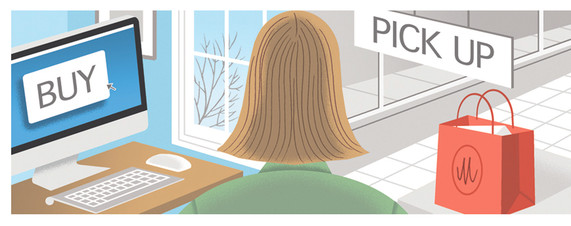Retailers Found Unprepared to Meet “I Want It Now” Consumer Demand
Retailers are working hard to transform their supply chains to a customer-centric, omni-channel model, but 80% are not prepared for the magnitude of change required, according to HRC Advisory (HRC), a leading strategic retail advisory firm and unit of Hilco Global. The finding was revealed today as part of HRC’s latest retail industry study, which found that expensive online returns, cannibalization of in-store sales and outdated systems are some of the challenges restraining retailers.
“Today’s consumer is driven by an ‘I want it now’ mentality, yet many retailers are still struggling to deliver, said Farla Efros, President of HRC Advisory. “Competing with pure-play e-commerce retailers, and accommodating the multitude of new fulfillment options, requires a significant increase in supply chain flexibility and better integration between the physical store and e-commerce network,” she added “Without these changes, traditional retailers will not be able to execute a truly customer-centric model.”
Want to see how Retail Pro tools can give you clear visibility across every channel and help you build omnichannel fulfillment in your stores? Sign up for the webinar on 9/16/2015 at 11 am PDT here or leave a comment with your request for a link to the recording after the date.
The study found that retailers are struggling with the following key challenges:
- Online returns are expensive. 95% of retailers said their biggest issue in transforming the supply chain was how to mitigate online returns, which can run as high as 30% and are quite costly to a retailer. 85% of retailers noted the high cost of online returns to a store, particularly when the item is not carried in that store. And when returning to a fulfillment center or supplier, retailers incur incremental freight costs, the possibility of shipping-related product damage, as well as a lost opportunity for a replacement sale in-store.
- Cannibalization of in-store sales. 75% of the retailers surveyed said that some of their e-commerce sales are cannibalizing sales that would have otherwise been in stores. And, although e-commerce sales growth rates are often 10-15% greater than physical store growth rates, 70% of retailers are still struggling to develop a profitable economic business model for e-commerce while maintaining acceptable profitability for stores.
- Systems and infrastructure are outdated. All of the retailers surveyed felt that fully integrating inventory and fulfillment between the online and physical store channels would achieve the most effective customer outcome and the lowest margin risk. But more than half (52%) admitted that they do not have the systems in place to provide the required visibility to inventory in each store. Further, retailers lack the necessary processes to compete with their e-commerce-only counterparts, as only 35% of those surveyed had online capabilities such as vendor drop ship, or order in-store and deliver to the customer. The good news is that 60% of the retailers surveyed have plans to invest further in their e-commerce-related systems to provide an improved customer experience.
Key Additional Findings:
- 80% of the retailers surveyed identified inventory visibility and accurate assortment planning between online and physical channels to be the top-two challenges in enabling fulfillment capabilities.
- Only 53% of retailers are currently able to present customers with accurate inventory information and to fulfill the entire order at the time of online purchase.
- Only half of the retailers are able to ensure fulfillment from the closest location when an item is available in multiple locations and distribution centers.
- More than half (55%) of the retailers continue to have dedicated fulfillment facilities for each channel. Only 25% of these retailers are launching initiatives to combine these facilities in order to serve both channels more cost-effectively and optimize their working capital investments in inventory.
Notes on Survey Methodology and Analysis
HRC Advisory conducted detailed survey interviews with executives from April 2015 to June 2015. The study surveyed 20 North American Supply Chain executives from brick & mortar retailers in the electronics, food, health and beauty, fashion apparel, and accessories sectors. The objective was to understand what steps retail executives are taking to profitably adapt their Supply Chains to remain competitive in today’s environment and how they are addressing the challenges being faced. 65% of the companies were publicly traded, and 35% were privately owned.
See the original article on Sector Publishing Intelligence.











